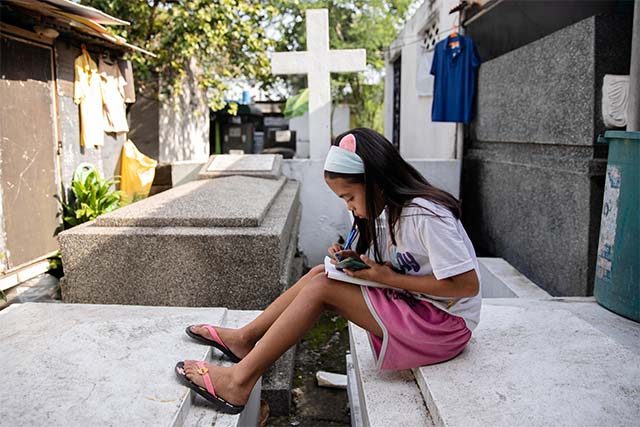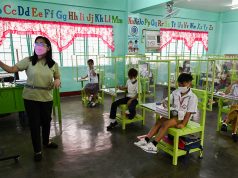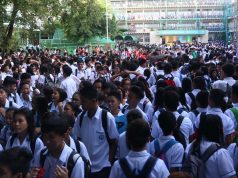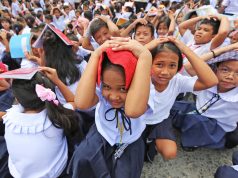
A group advocating reforms in the education sector on Monday released series of infographics showing the current state of Philippine education in numbers.
These infographics were released by the Philippine Business for Education after the World Bank released a similar report where it stated that Filipino students did not meet learning standards.
“Here’s the current state of Philippine education in numbers,” read the post.
“The Philippine education system is in crisis,” one of the infographics read.
In the infographics, it was stated that one out of four parents claim that their children are not learning.
In detail, 72% of 15-year-old Filipinos are “low achievers” in the subjects of reading, math and science, citing data from the Program for International Student Assessment (Pisa) in 2018.
Junior high school students also move up the next level despite having low proficiency rates, wherein:
- 1% proficient in mathematics
- 3% proficient in English
- 1% proficient in science
- 13% proficient in Filipino
- 10% proficient in Araling Panlipunan
In terms of the overall situation, an alarming 1.1 million students did not go to school this year and 1,179 private schools have closed in 2020.
Moreover, three out of four public schools do not have internet access amid the demands of the blended or distance learning approach.
In a separate infographic, the number of students who enrolled in the academic year 2020-2021 are:
- 66 million for basic education
- 63 million higher education
- Only 753,000 for Technical and Vocational Education and Training or TVET for the year 2020
These figures were presented in a webinar titled “State of Education Press Conference” the PBEd hosted on the same day.
In the webinar, PBEd Chairman Ramon del Rosario, Jr. said that the COVID-19 pandemic worsened the country’s declining education system.
“We are seeing declining access and quality of education, affecting the learning outcomes and future prospects of our youth and our country,” Del Rosario said.
Impact on future generation
When these data reached the subreddit r/Philippines, users expressed alarm over the impact of the poor education system on these future workers.
“That’s a pretty devastating verdict. All but guarantees that the Philippines will be stuck in poverty for decades to come,” one Reddit user said.
“And we will feel the full impact of this crisis 10-20 years down the road once these kids start to work, have families etc. Even students whose parents can afford to send them to private schools are being affected,” another user wrote.
Del Rosario likewise mentioned the similar sentiment on the webinar, saying that the next generation will suffer the consequences of poor learning.
“We might not feel its immediate impact now, but we stand to suffer long-term ramifications of inaction and poor learning. We deserve better; our people deserve so much more,” he said.
Other online users, meanwhile, raised the situation of teachers and students, particularly in public schools.
“Also a lot of teachers change careers or go abroad. Teacher support is also important,” one user said.
“Public schools, teachers are underfunded and the curriculum is formulaic. Children aren’t given much incentives to study except ‘to help the family’. Critical thinking isn’t also encouraged. Many teachers are forced to ‘pass’ failing students because of quotas,” another user wrote.
The World Bank report
The World Bank also released a report titled “Improving Student Learning Outcomes and Well-Being in the Philippines: What Are International Assessments Telling Us? (Vol. 2): Synthesis Report Presentation” based on three global assessments which the country participated in:
- Pisa 2018
- The Trends in International Mathematics and Science Study (TIMSS) – first participation in 2019 after 16 years of hiatus
- The Southeast Asia Primary Learning Metrics (SEA-PLM) – first cycle in 2019
Across all three, more than 80% of the students similarly fell below minimum levels of proficiency expected for their grade levels.
Only 10 to 22% posted “at or above minimum proficiency” scores.
Education Secretary Leonor Briones, however, disagreed with the report. She said the data presented by the World Bank are old and that it insulted the nation.
Briones demanded an apology from the international financial institution.
“And since the country was insulted, was shamed and so on, we expect and look forward to a public apology lalo na iyong hindi pagsabi sa amin na naglabas sila ng ganoong klaseng datos na lumang-luma na datos,” she said.









